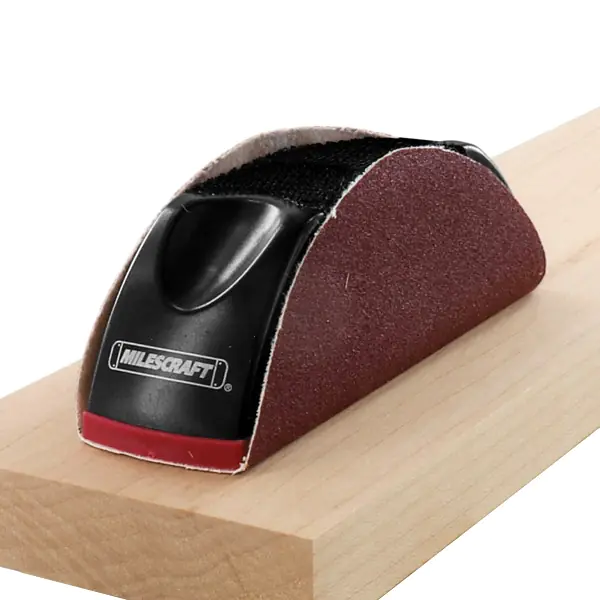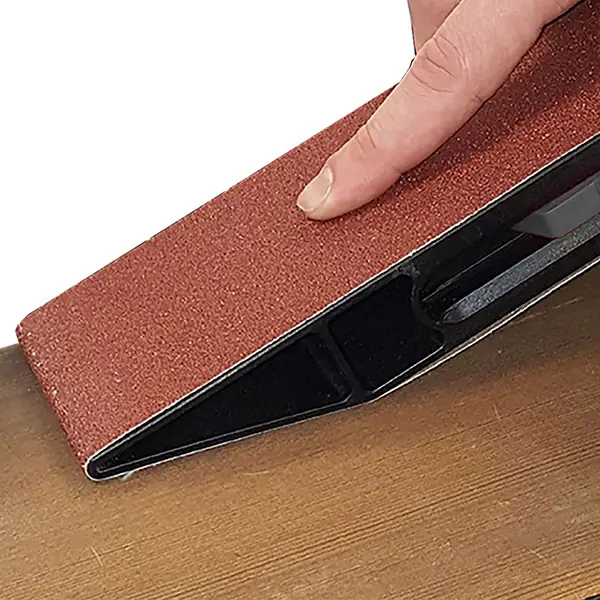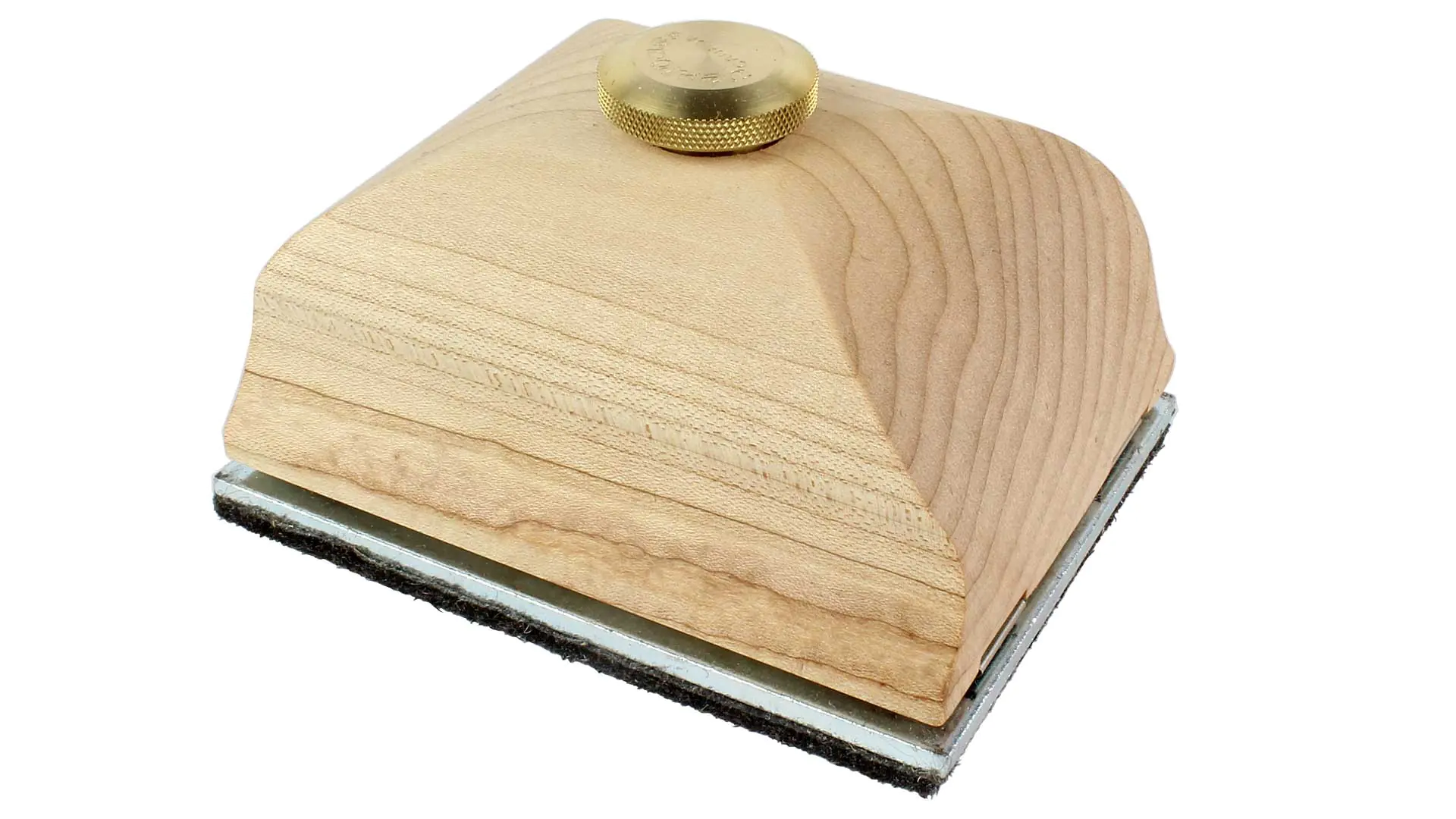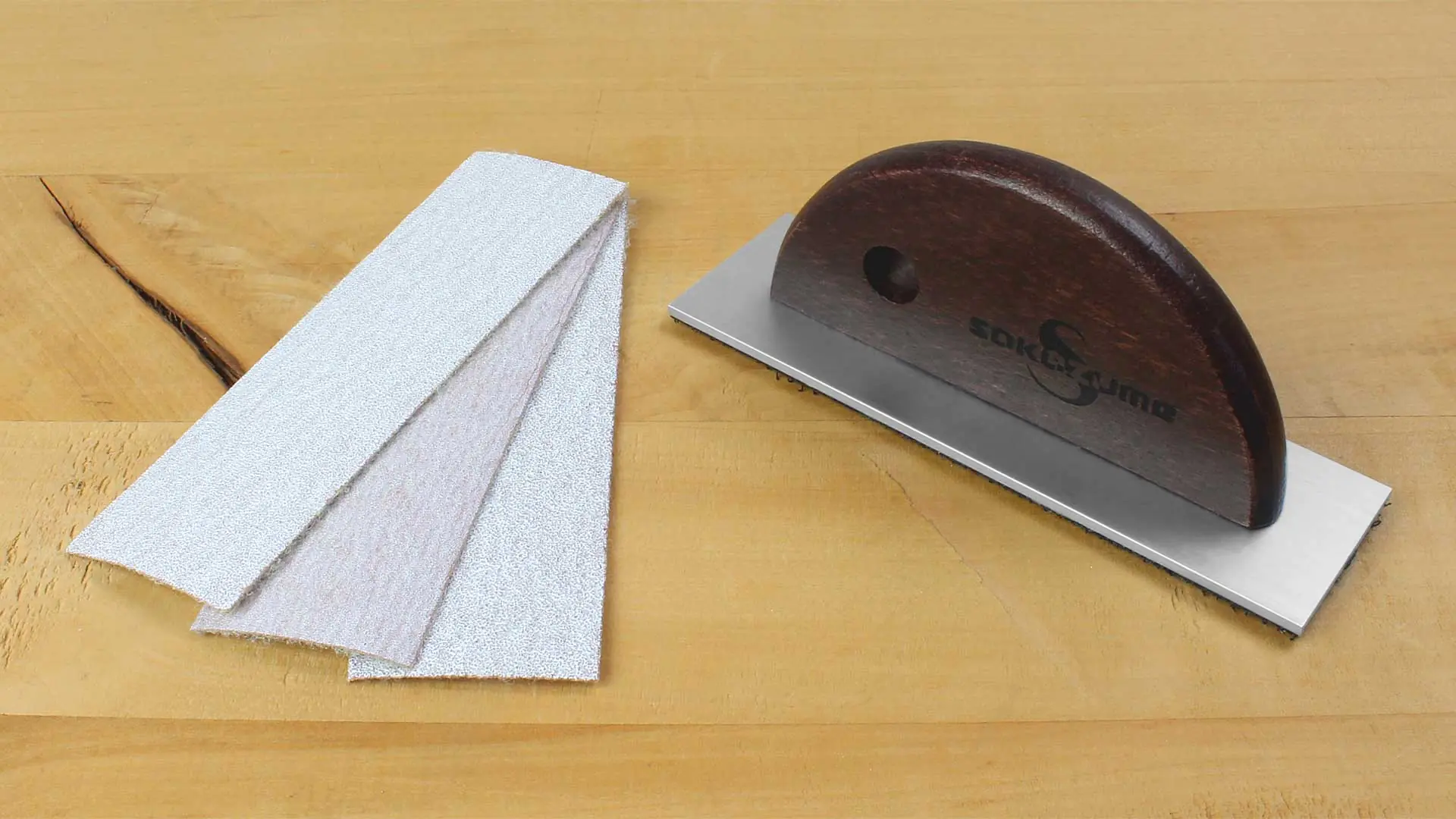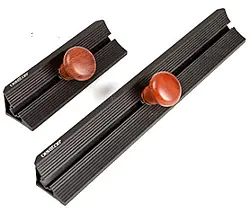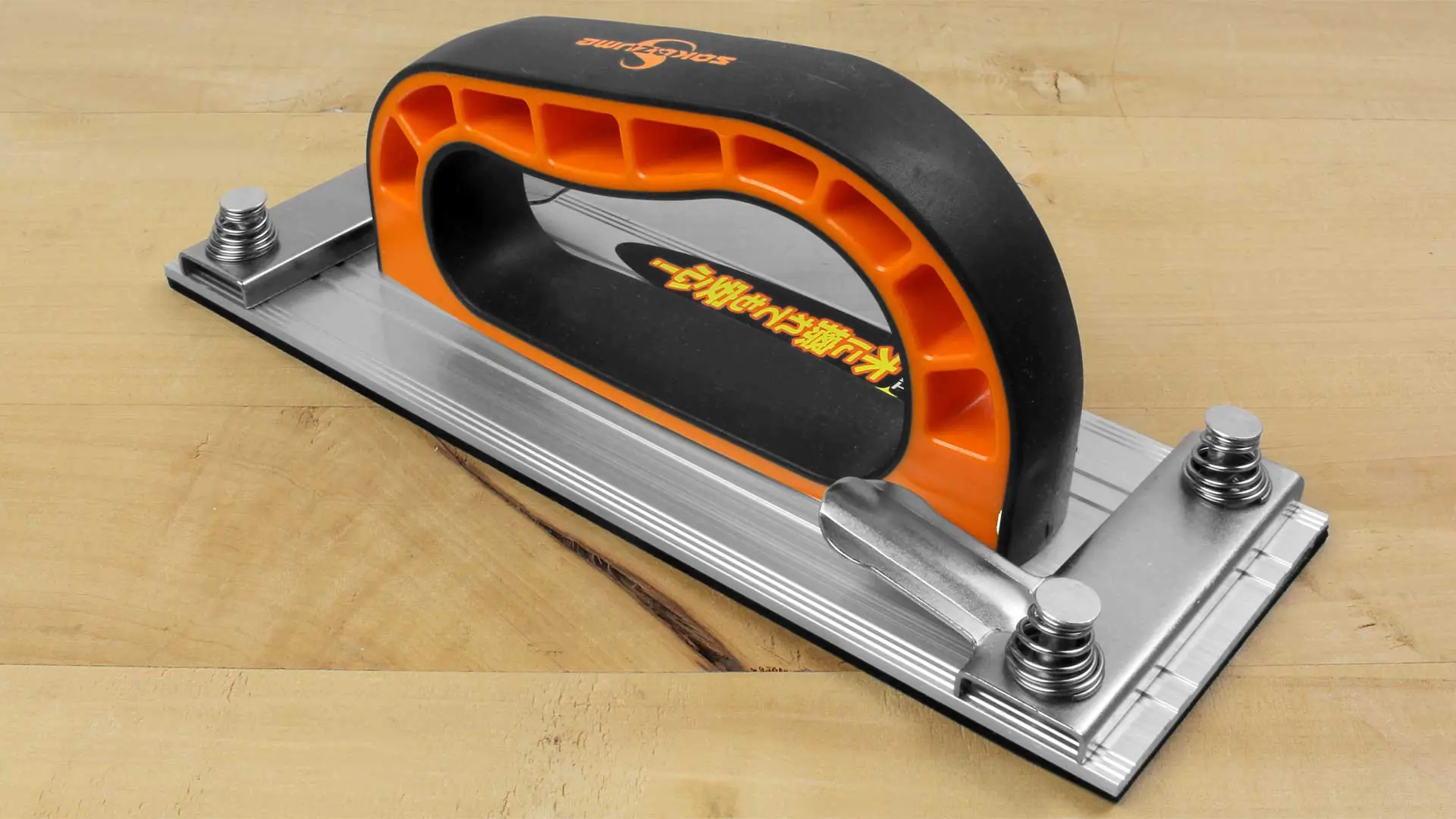Using a sanding block significantly eases the surface treatment of wood. Sandpaper used directly by hand poses a risk of injury, as loose wood fibers can pierce through the paper and penetrate the skin. A sanding block provides protection against this. Compared to machine sanding, hand sanding offers the advantage of allowing you to work with more sensitivity and better control over the material removal. This is particularly noticeable when sanding thin veneers, which can quickly be sanded through. If that happens, the base wood becomes visible, and you may have to start over. A good sanding job is the foundation and thus the most critical prerequisite for any further surface treatment. Any carelessness during sanding will be regretted later during varnishing: mistakes often become clearly visible and noticeable only then. Each sanding machine leaves its own unique sanding pattern, and especially the orbital sander leaves pretty circles on the surface that only appear later, often causing frustration among woodworkers. By using hand sanding as the final step before surface coating, you can largely protect yourself from such surprises.
Note: We would like to mention that the best surfaces are not achieved by sanding but by using a finely set smoothing plane with a sharp blade. The surfaces can be so clean that further treatment – depending on the application area – may not be necessary. However, firstly, the types of surfaces suitable for this method are limited, secondly, it requires a lot of practice, and thirdly, for an even varnish application, the fine fiber tearing typical of sandpaper can even be advantageous.
Available, delivery time: 1-3 businessdays within Germany
Available, delivery time: 1-3 businessdays within Germany
Available, delivery time: 1-3 businessdays within Germany
Available, delivery time: 1-3 businessdays within Germany
Available, delivery time: 1-3 businessdays within Germany
Available, delivery time: 1-3 businessdays within Germany
Available, delivery time: 1-3 businessdays within Germany
Available, delivery time: 1-3 businessdays within Germany
Available, delivery time: 1-3 businessdays within Germany
Available, delivery time: 1-3 businessdays within Germany
Available, delivery time: 1-3 businessdays within Germany

